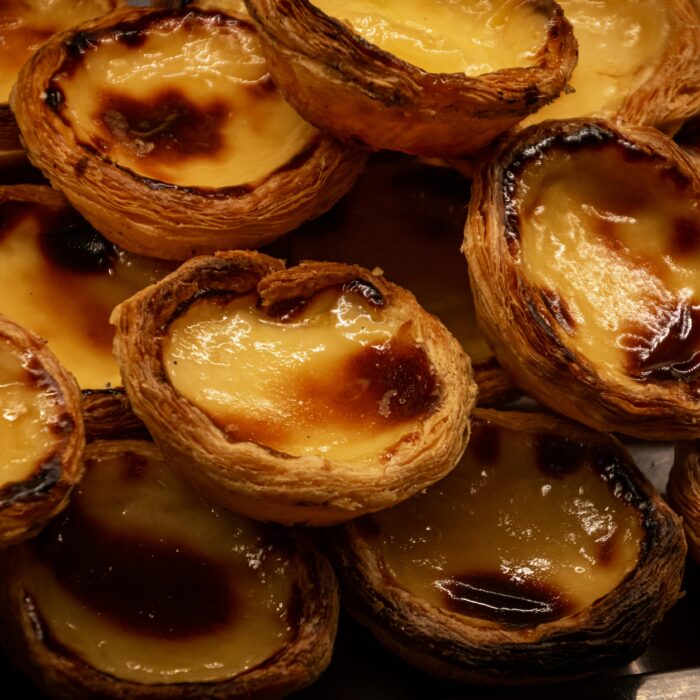You have no items in your cart. Want to get some nice things?
Go shoppingThis is our third review together, dear reader, and by traditionalist reckoning this is either when you should give me a goodnight kiss or gently tell me we’re through. But who am I kidding? This is the internet and we’re of our generation: if it wasn’t good the first time, you wouldn’t still be here. (Thank you, by the way. It was marvelous for me, too.)

Nonetheless, there’s something appropriate about coming to La Bohème at this juncture, because its both considered the classic introductory opera and at the same time a masterpiece that needs yield to no other work in its sophistication. The Met program acknowledges its “marvelous ability to make a powerful first impression (even to those new to opera).” Peter Fox Smith’s A Passion For Opera, which makes a great starting point for anyone interested in deeper, but unpretentious and accessible reading on the art form, likewise treats Boheme as a starting point for the whole subject. Looking around the audience at my performance, I saw a much higher than usual proportion of those in attendance were under forty. And yet many were also clearly back for what must have been an almost annual pilgrimage to the 1981 Franco Zeffirelli production.
The Met has shown La Bohème in all but nine seasons since its Met premiere in 1900; as the program proudly noted, my particular night was “the 1,273rd Metropolitan Opera performance of Giacomo Puccini’s La Bohème.” What makes this opera at once so immediately and so enduringly appealing? Part of it is that the story – of a struggling writer who falls in love with a seamstress suffering from tuberculosis, whom he is too poor to care for and so drives away, until she returns to die – is simple, realistic, and accessible, yet made sublime through Puccini’s music. The word ‘tearjerker’ is often applied, but Bohème does not deserve the implied artificiality of the term. Its love and loss are tragic because they are true.
But surely another part of La Bohème’s appeal is that it does not simply wallow in tragedy. The first three acts offer tender romance, sex appeal, argument, comic jostling among the crowds of Paris, and sheer spectacle – in short, a glimpse in miniature of all that opera has to offer. And it’s short – at under 3 hours including two substantial intermissions, it makes for a very social evening – and colorful. What’s not to love?
Though the Zeffirelli production was originally created for a cast that included José Carreras and Teresa Stratas, the show has outlasted its stars and with the passage of time has become something of a repertory piece: the cast varies throughout the Met’s year. This is apparent in the first act, as the poet Rodolfo (Jean-Francois Borras), artist Marcello (Mariusz Kwiecien), philosopher Colline (David Soar), and musician Schaunard (Alessio Arduini) slowly convene in the freezing garret they share. There are some miscues and a bit of overacting until everyone settles down and gets comfortable.
But once they do, the show really starts to take off. Since Schaunard has unexpectedly come into a bit of money, the four decide to go out and celebrate, but Rodolfo remains behind a second to put the finishing touches on an article he’s writing – lucky for him, as his downstairs neighbor, a seamstress named Mimi (Kristine Opolais) comes by to borrow a light for her candle. Three of the most famous songs in opera – Rodolfo’s “Che gelida manina!” (“Your little hand is frozen”), Mimi’s reply “Si. Mi chiamano Mimi” (“Yes. They call me Mimi”), and the duet “O soave fanciulla” (“Oh, lovely girl”) – follow one on top of the other as they realize its love at first sight.
Borras’ and Opolais’ talents are both very well suited to their roles. Borras has a knack for simultaneously seeming not prepossessing and yet of being able to fill the entire opera house with his clean, pellucid tenor. Opolais, for her part, a bold soprano with great range, has excellent control over both her tone and her acting. The result is that both are able to avoid the temptation to play this modest Parisian couple like the kings and queens that often make up the star’s repetoire, and yet they have the vocal talent necessary to ennoble Rodolfo and Mimi all the same.
If the first (and fourth) acts are where Borras and Opolais show their stuff, the second and third acts are where we see why Zeffirelli’s production is in its fourth decade. The second act is set on a lavish, two-story reproduction of Paris’ Latin Quarter at night. Several hundred extras fill the stage, ranging from shopping and strolling Parisians to kids chasing the toy merchant Parpignol’s donkey cart (yes, it’s pulled by a real donkey). Then Musetta (Marina Rebeka), Marcello’s former lover, comes in on a horse-drawn phaeton, and grabs the attention of the dining friends (particularly of her jealous former lover, which is her intent) with a salacious song. Zeffirelli, in other words, was not insensitive to the ability of spectacle to jolt an art form that was once at least as much popular as refined, to life. (Is it a coincidence that the two immensely popular productions often referred to as the Met’s old war horses – Zeffirelli’s La Bohème and the 1988 Aida – both feature real ones?)
When we return in the third, a snowstorm fills the air beside a tavern and one of the gates of Paris. Mimi comes, fleeing Rodolfo’s jealous rages – but, we soon learn from a chasing Rodolfo, those are just an act. The artist, aware that his beloved is desperately ill, is trying to chase her away into the arms of someone better able to take care of her. The real jealous lovers, meanwhile, as their intermittent fights make clear, are Marcello and Musetta. Tearfully, Mimi agrees to leave, although only once the weather is warmer.
The famous final act is set in the same apartment as the fourth. As the poet and the painter are lamenting their lost lovers to their friends, Mimi enters, sick to the point of death. It is a tribute to Opolais’ considerable acting ability that this tall, regal soprano, who towers over her fellow stars, can convince us that she is small, frail, and dying of a lung disease – just as her stunning voice is reverberating from the roof. But she does. As all busy themselves in an effort to forestall the inevitable, the supporting cast comes to the fore – particularly Colline, with his tuneful farewell to the coat he is selling for food, “Vecchia zimarra”. But it’s left to Borras’ Rodolfo to break your heart with his rending cry, “Mimi! Mimi!” as all notice she has passed, and the curtain falls.

Nicholas M. Gallagher
Nicholas M. Gallagher is a staff writer at The American Interest. You can read him online at http://www.the-american-interest.com/byline/nicholas-m-gallagher/ or follow him on Twitter at @ngallagherai




